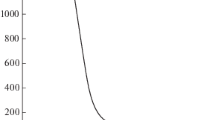Abstract
For brittle materials it is shown how the probability of failure of an inhomogeneously stressed structure can be estimated from a knowledge of the expected defect population and the local fracture criterion relating the local stress for failure to the defect size. Account is taken of the possibility that a sample of material contains no defects so that failure is then caused by another mechanism. It is shown that the theory presented is very closely related to the classical theory of Weibull. Furthermore it is demonstrated how account may be taken of loading uncertainties which are experienced in practice.
As an example of an inhomogeneous stress state, the pure bending of a beam has been considered in detail. Such an analysis offers a convenient experimental method of determining the defect characteristics of a material. It is shown that a consistency check is possible by estimating experimentally the distribution of failure-initiating flaws and comparing it with a theoretical prediction.
Résumé
On montre pour des matériaux fragiles comment la probabilité de ruine dans une structure non homogène et soumise à contrainte peut être estimée à partir de la connaissance de la population prévue de défauts et d'un critère de rupture locale mettant en relation la contrainte locale à la ruine avec la dimension d'un défaut. On tient compte de la possibilité qu'un échantillon du matériau ne contienne pas de défaut de sorte que la ruine est causée dans ce cas par un autre mécanisme. On montre que la théorie présentée est en étroite relation avec la théorie classique de Weibull. De plus, on démontre qu'il est possible de tenir compte d'incertitudes quant à la mise en charge, telles qu'elles sont rencontrées en pratique. Comme exemple d'un état de contrainte inhomogène, on a considéré la flexion pure d'une poutre dans le détail. Une telle analyse offre une méthode expérimentale appropriée à la détermination des caractéristiques de défaut d'un matériau. On montre qu'un contrôle de l'exactitude est possible en faisant une estimation expérimentale de la distribution des défauts susceptibles d'entraîner la ruine, et en comparant cette distribution avec une prédiction théorique.
Similar content being viewed by others
References
W. Weibull, Proc. Ing. Vetenskapsakad., 151 (1939).
W. Weibull, Journal of Applied Mechanics, 18 (1951) 293.
D.G.S. Davies, Proceedings of the British Ceramic Society, 22 (1973) 429.
P. Stanley, H. Fessler and A.D. Sivill, Proceedings of the British Ceramic Society, 22 (1973) 453.
P. Stanley and J. Margetson, International Journal of Fracture, 13 (1977) 787.
A. de S. Jayatilaka and K. Trustrum, Journal of Material Science, 12 (1977) 1426.
R.A. Hunt, “Reliability Technology”, NPL Report DMA A(1) (1976).
Author information
Authors and Affiliations
Rights and permissions
About this article
Cite this article
Hunt, R.A., McCartney, L.N. A new approach to Weibull's statistical theory of brittle fracture. Int J Fract 15, 365–375 (1979). https://doi.org/10.1007/BF00033061
Received:
Issue Date:
DOI: https://doi.org/10.1007/BF00033061



